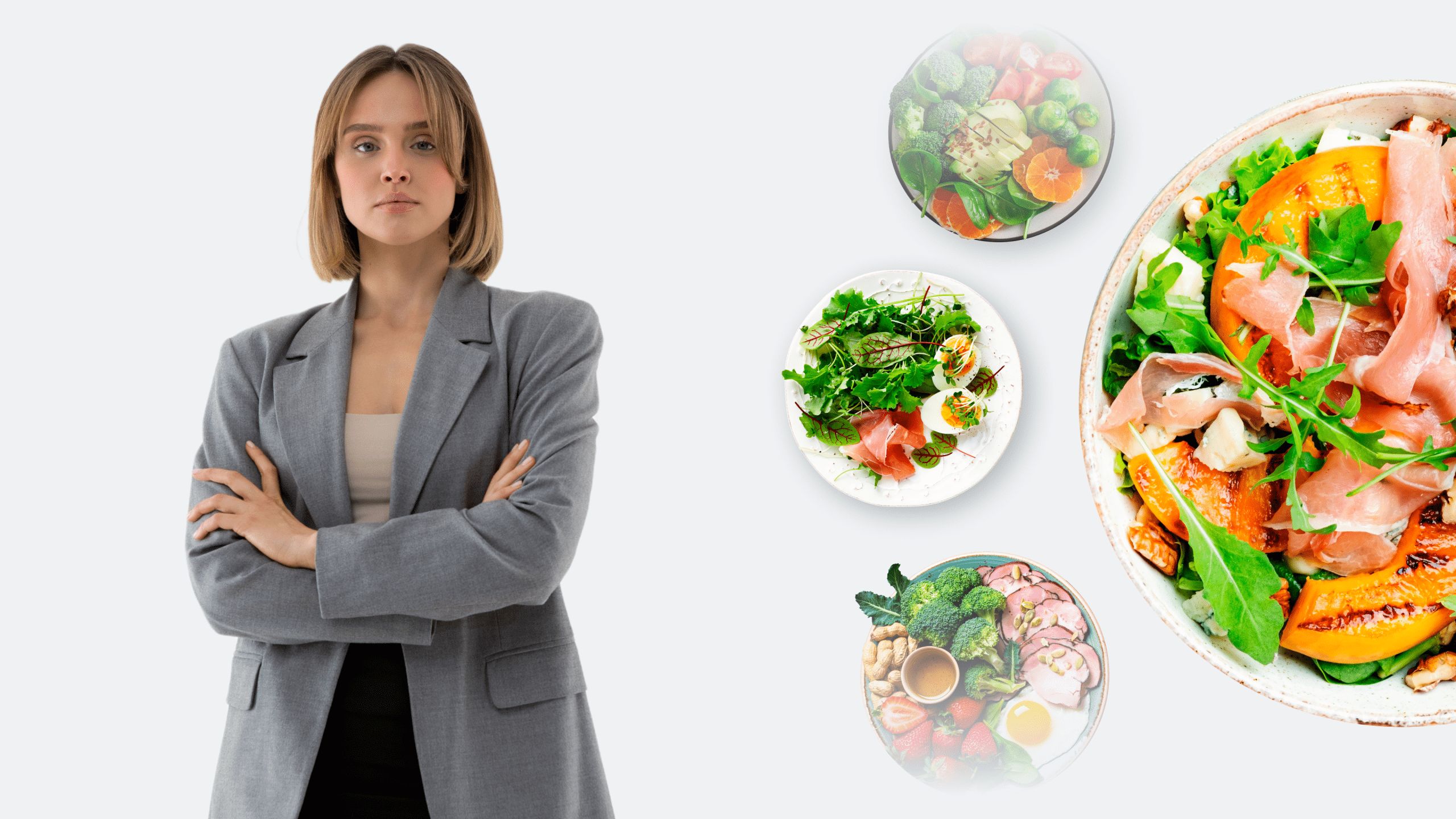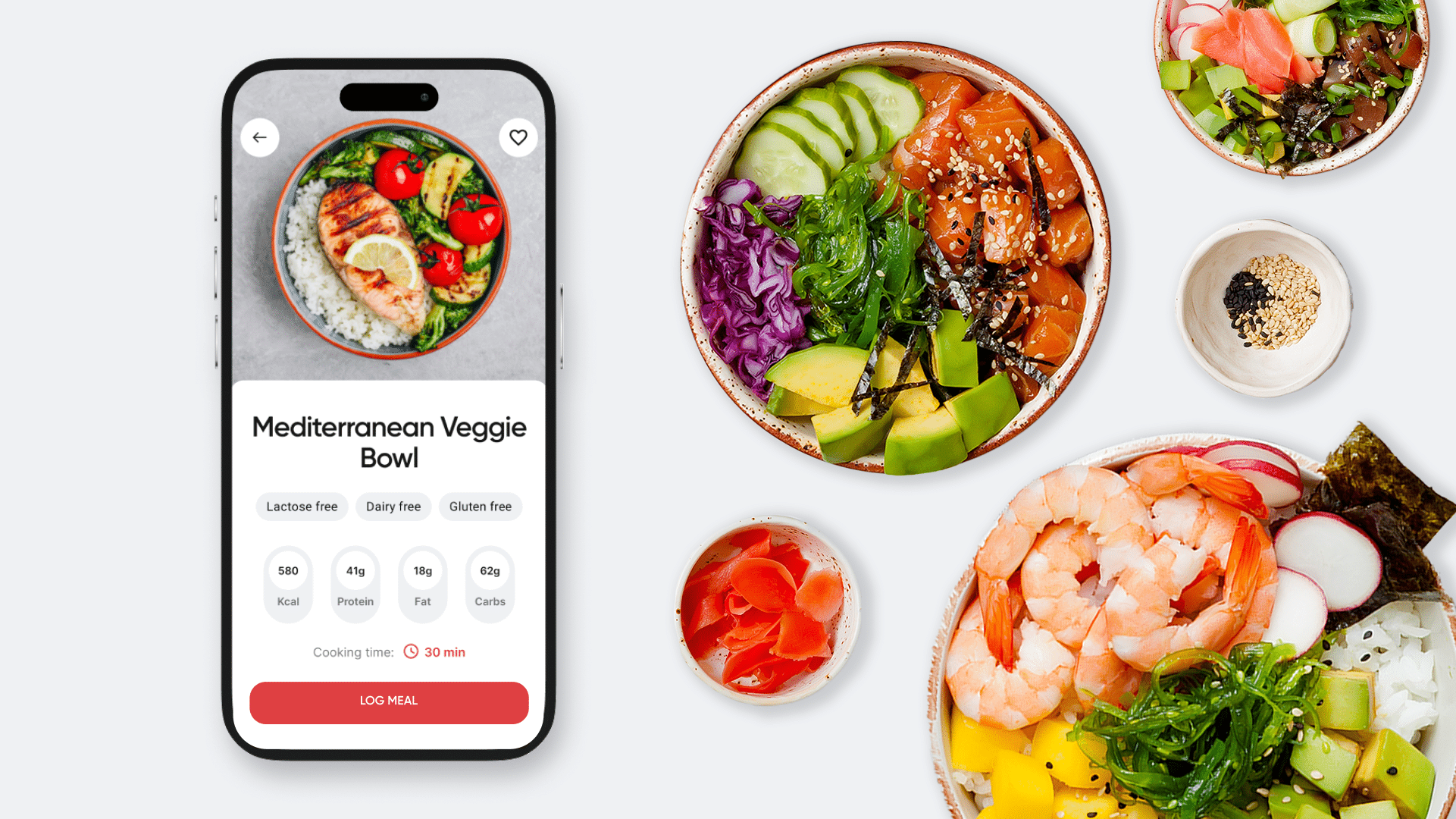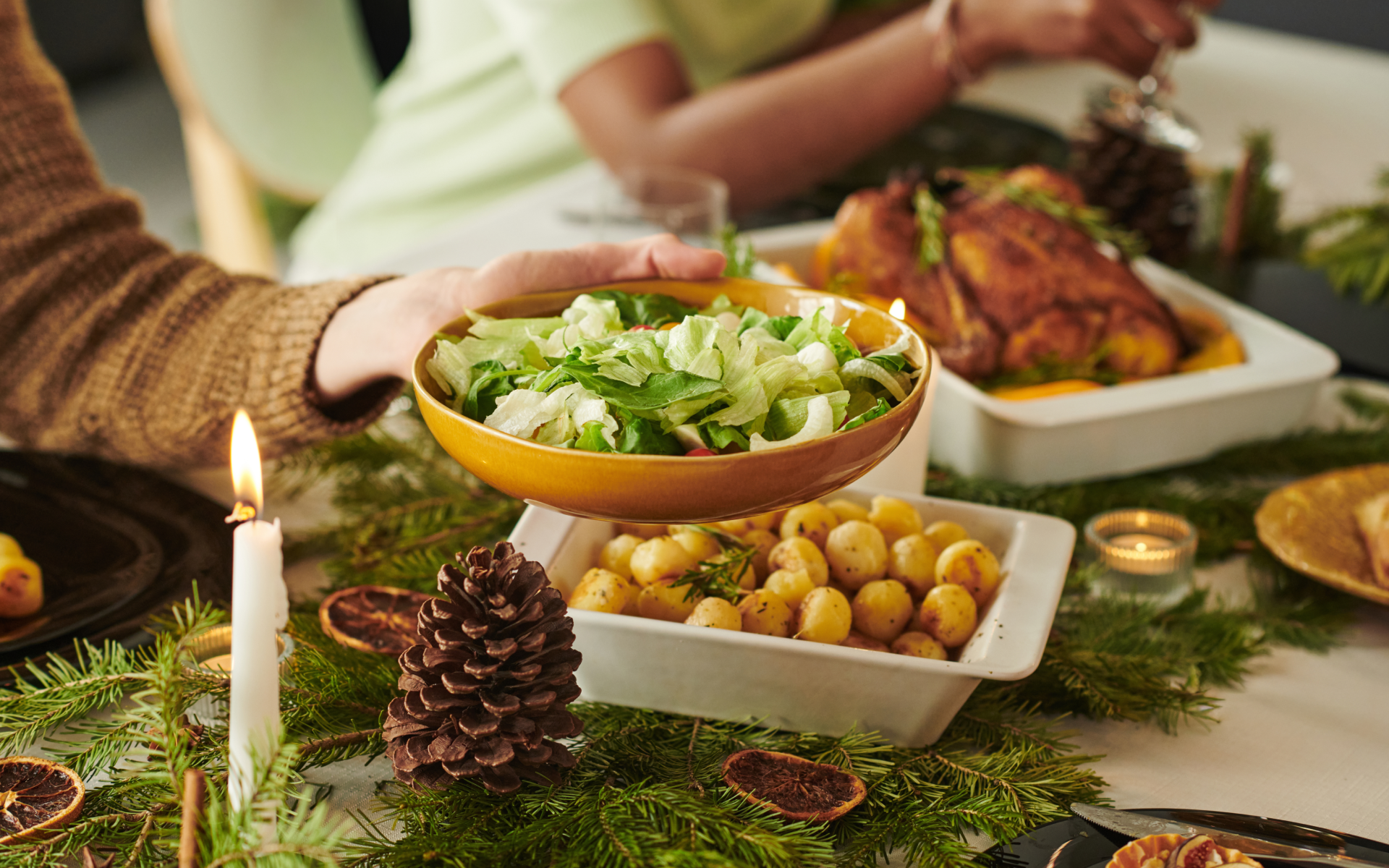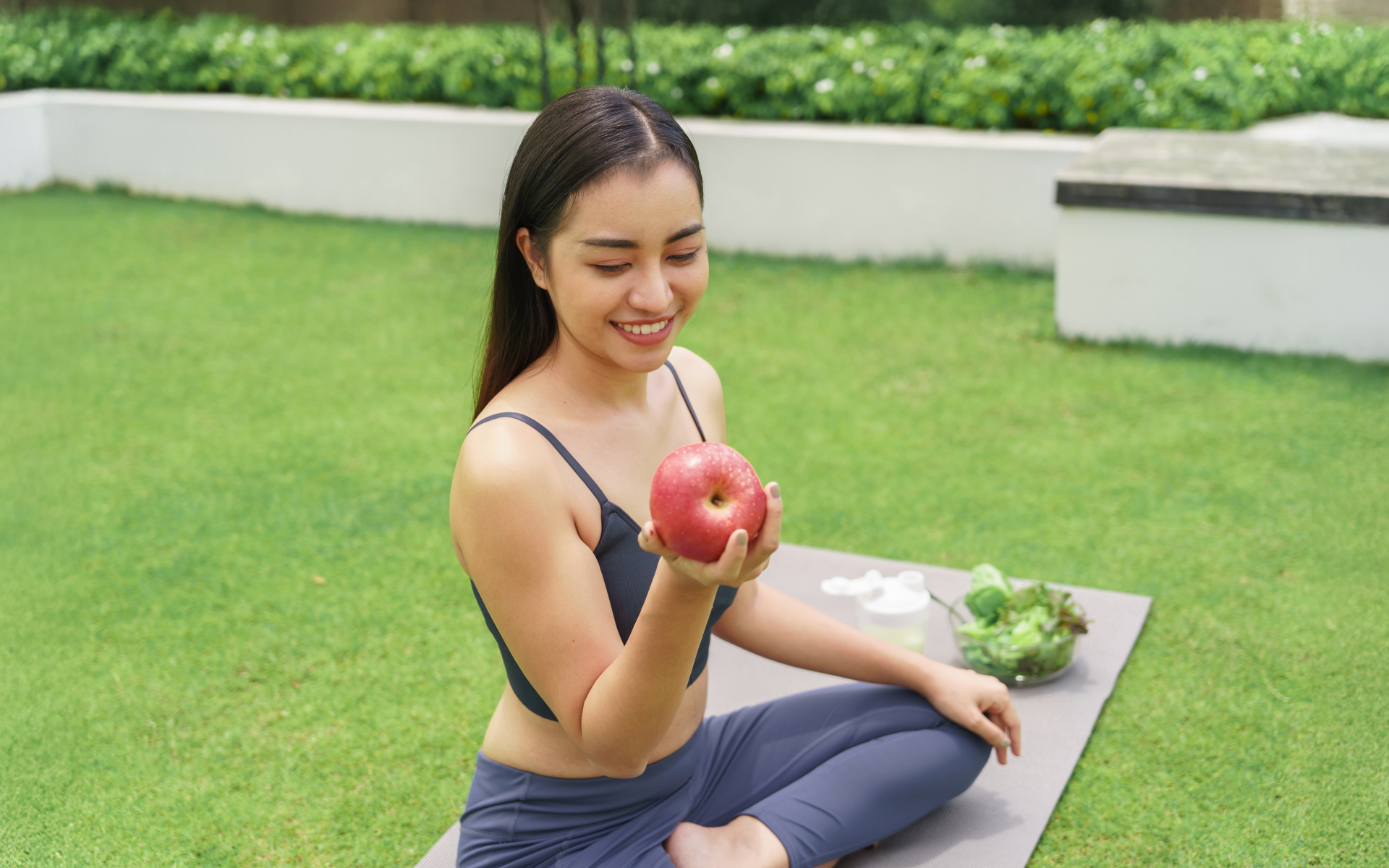Understanding Holistic Nutrition
Holistic nutrition is about more than just the food on your plate. It’s an approach to healthy eating that nourishes your body, mind, and spirit. It focuses on whole, unprocessed foods while also considering your nutritional needs. Holistic nutrition promotes a balanced diet and supports overall health[1].
Core Principles of Holistic Nutrition
What Is Holistic Nutrition?
Holistic nutrition is about how food fits into your whole life. The nutrition tips are focused on whole, natural foods and consider your lifestyle, health, and environment. Holistic nutritionists create personalized plans that consider all areas of a person’s life, not just their diet.
Core Principles of Holistic Nutrition
- Holistic nutrition is about fueling your body with the nutrients it needs to function at its best. This approach emphasizes whole, minimally processed foods such as produce and whole grains. It also recommends lean proteins and healthy fats[2].
- However, holistic nutrition is about more than the food itself; it’s also about how it’s prepared and eaten. Mindful eating and developing a healthy relationship with food are also key components of holistic nutrition[3]. When possible, you should choose locally grown, in-season produce [4].
Importance of a Balanced Diet
A balanced diet is vital to holistic nutrition. It gives your body what it needs:
- Carbs for energy
- Protein to build muscle
- Fat for brain health
- Vitamins and minerals for many jobs
- Fiber for a healthy gut
A good diet helps[5]:
- Give you energy
- Keep you from getting sick
- Help you grow and fix the damage
- Keep your weight right
- Avoid getting very sick later
What Does a Balanced Diet Do for Me?
- It helps you work best
- It keeps you from getting sick [6].
- It helps manage your weight
- It keeps you full and gives you energy
- It enables you to feel good in your mind[7]
Eating whole foods and having a good relationship with food helps you feel good and not get sick later. It’s not just what you eat, but how you eat and how food fits in your life.
BetterMe is your fast-track ticket to a long-lasting weight loss! Tailor your fitness journey and maximize your results with just a couple of swipes!
How to Integrate Holistic Nutrition into Daily Life
Holistic nutrition is about nourishing your whole self – body, mind, and spirit – through healthy eating and self-care. Here are 10 nutrition tips to get you started:
- Focus on whole foods: Aim for plenty of fruits, vegetables, whole grains, lean proteins, and healthy fats.
- Eat mindfully: Pay attention to your hunger cues. Also, eat slowly to savor your food.
- Consider your individual needs: What works for one person may only work for that person. Consider your preferences and health needs.
- Cook at home: This enables you to control the ingredients and cooking methods. Try meal prepping for quick, healthy options.
- Limit processed foods: The occasional treat is fine. Avoiding regular consumption can lead to fewer health problems.
- Drink water: Aim for at least eight glasses daily. Drink more if you’re active.
- Practice self-care: Make time for activities that bring you joy and relaxation.
- Seek out high-quality foods: Opt for locally sourced, organic, and grass-fed options when possible.
- Be kind to yourself: It’s okay to indulge sometimes. Focus on progress, not perfection.
- Educate yourself: The more you know, the better you’ll be at making healthy choices.
Diet Planning
The path to balanced, holistic eating starts with understanding your unique dietary needs[8]. Factors such as your age, gender, body size, and activity level all play a role in determining the calories your body requires. Be mindful of any dietary restrictions or preferences, such as vegetarian, gluten-free, or dairy-free options.
If you live with health conditions, your nutrition plan must consider those. For personalized guidance, consider consulting a healthcare provider or registered dietitian.
A Rainbow on Your Plate
Aim to include a variety of colors on your plate to ensure you get a broad spectrum of nutrients. Leafy greens are powerhouses of nutrition, while orange and yellow vegetables are bursting with vitamin C and beta-carotene [9].
Nourishing Choices vs. Ones to Limit
Prioritize whole, unprocessed foods in your diet. Limiting sugary drinks and saturated fats can lower your risk of heart disease and other health concerns [10].
By making conscious choices, you’re investing in your well-being.
Combining Nutrition with Exercise
Regular exercise is vital to overall well-being. The World Health Organization suggests aiming for at least 150 minutes of moderate or 75 minutes of vigorous exercise each week [11].
Exercise does more than burn calories—it improves insulin sensitivity, brightens mood, and promotes healthy sleep [12].
To get the most out of your workouts, fuel your body with the right foods before and after exercise. Aim for a balanced mix of carbohydrates and protein. A banana with peanut butter or a fruit and yogurt smoothie make great pre-workout snacks [13].
Importance of Hydration
While it is often overlooked, staying hydrated is essential for maintaining your health. Water makes up approximately 60% of our body weight and plays a central role in many bodily functions, including:
- Digestion
- Circulation
- Regulating body temperature
- Eliminating waste
Proper hydration supports these functions, helps prevent chronic diseases, and promotes wound healing [14]. Don’t underestimate the power of a well-hydrated body!
Read more: A Beginner Intermittent Fasting Meal Plan To Fit Your IF Journey
Daily Water Intake Recommendations
Consuming at least eight 8-ounce glasses of water daily is a standard guideline. However, individual needs may vary. For example, men’s average daily water intake is approximately 15 ½ cups, while for women, it’s 11 ½ cups [15].
Athletes need even more water [16]:
- Before you start training:
- Drink 500-600ml of water or sports drink 2-3 hours beфforehand.
- Drink another 200-300ml of water or sports drink 10-20 minutes before you start.
- During training:
- Drink 200-300ml of fluid every 10-20 minutes to replace what you’ve sweated. Try to keep your weight loss under 2%.
- After training:
- Drink enough to replace any fluid you lost during training.
Fluid Sources Beyond Water
Water is the ultimate thirst quencher, but many other beverages can contribute to your daily hydration needs. Here are some options:
- Herbal Tea: Most herbal teas are hydrating and contain antioxidants. Popular options include peppermint, chamomile, and hibiscus.
- Low-Sugar Sports Drinks: Sports drinks can be a good choice for hydration. They provide electrolytes that can help replace those lost through sweat. However, you must be mindful of sugar content and opt for low-sugar versions when possible.
- Milk: Milk and plant-based milk help with hydration. They also provide nutrients such as protein and calcium.
- Juice: You should limit your juice intake due to the high sugar content, but small amounts of 100% fruit and vegetable juice provide hydration and nutrients.
- Coffee and Tea: Moderate amounts of coffee and tea can help with hydration. Too much can cause dehydration.
- Soups: Clear soups are a good hydration choice, especially when you’re sick. Avoid creamy soups, which are high in calories and fat.
Drink plenty of water throughout the day. The target is at least eight glasses, but you may need more when you’re active.
Examples of Balanced Diets and Recipes
Simple and Healthy Recipes
A balanced diet is the key to optimal health. It should include a variety of nutrient-dense foods from all groups. Here are some examples of balanced diets and recipes:
Healthy Balanced Diet:
- Emphasizes whole, unprocessed foods
- Limits sugary drinks, fast food, and processed meats
Example Recipes:
- Grilled Chicken and Vegetable Kabob: Brush chicken and vegetables with olive oil. Grill until the chicken is cooked through. Season with salt, pepper, and your favorite herbs[17].
- Quinoa and Black Bean Salad: Mix cooked quinoa, black beans, diced tomatoes, cucumber, and red onion. Top with a citrus vinaigrette made from lime juice, olive oil, and a pinch of salt[18].
Vegetarian Diet
- Excludes meat, fish, and chicken, but may include dairy products and eggs
- Emphasizes plant-based protein sources such as beans, lentils, tofu, and tempeh
Example Recipes:
- Lentil Soup: Saute onions, carrots, and celery in olive oil. Then add lentils, diced tomatoes, vegetable broth, and your favorite spices. Simmer until the lentils are tender, then season with salt and pepper to taste[19].
- Roasted Vegetable Wrap: Fill a whole-grain wrap with roasted vegetables such as eggplant, zucchini, red bell pepper, and red onion. Top with hummus and mixed greens[20].
Keto Diet
- Very low in carbohydrates and high in fat, with moderate protein intake
- Emphasizes fatty meats, oils, full-fat dairy, and low-carb vegetables
- Limits grains, sugary foods, and starchy vegetables
Example Recipes:
- Baked Salmon with Broccoli: Season salmon filets with lemon juice and your favorite spices. Bake in the oven with broccoli until the salmon is cooked through and the broccoli is tender[21].
- Cauliflower Fried Rice: Pulse cauliflower in a food processor until it resembles rice. Saute in a pan with coconut oil, then add scrambled eggs, soy sauce, and your favorite vegetables[22].
Sample Daily Diet
Eating holistically means taking care of your whole self while you eat in the course of your daily routine. Imagine starting your day with a warm bowl of oatmeal, topped with sweet berries and cinnamon. Really enjoy the delicious flavors.
For lunch, eat a colorful salad with fresh tomatoes and crunchy nuts, and pay attention to how good it tastes. At dinner, share a vegetable stir-fry with people you love, and feel happy about feeding your body well. This is what holistic eating is all about.
If you’ve mustered up the courage to crush your weight loss goal, let Betterme take the sting out of this demanding process. Our app will help you restructure your habits, remold your life and crank up your fitness results!
Creating a Holistic Meal Plan
Creating a healthy holistic meal plan is more than deciding what to eat. It’s about nourishing your body, satisfying your hunger, and supporting your overall well-being.
A well-planned diet can boost your energy and leave you feeling your best.
Here are some steps and nutrition tips to help you get started:
Step 1: Assess Your Dietary Needs
- Consider your age, gender, weight, height, and activity level, as these factors influence your calorie needs [23].
- Think about any dietary restrictions or preferences you may have, such as vegetarian, gluten-free, or dairy-free.
- If you have any health conditions, make sure to consider them. For personalized advice, consult a healthcare provider or registered dietitian.
Step 2: Focus on Whole Foods
- Buy whole, unprocessed foods such as fresh produce and whole grains. These provide essential nutrients and fiber [24].
- Include a variety of colors on your plate to ensure you get a range of vitamins and minerals.
Step 3: Plan Your Meals
- Decide on a meal-planning schedule that works with your daily routines. Plan a day or a week’s worth of meals at once.
- Consider your lifestyle and schedule. Plan for quick and easy meals or leftovers on busy days.
- Write down your meal ideas and make a grocery list of ingredients that you need.
Step 4: Shop Smart
- Stick to your grocery list to avoid impulse buys.
- Shop in the grocery store’s perimeter first. This is where you’ll find more whole foods.
- Consider shopping at farmer’s markets or using a community-supported agriculture (CSA) program to get fresh, local produce.
Step 5: Prep in Advance
- Set aside time each week to prep ingredients. This could include chopping vegetables, cooking proteins, or assembling salads.
- Use storage containers to keep prepped ingredients fresh and ready to go.
By following these steps, you can create a holistic meal plan that nourishes your body and supports your overall well-being. Remember, the key is to make it personalized and realistic.
Don’t be too hard on yourself if you slip up. Instead, focus on progress, not perfection. With time and practice, you’ll develop healthy habits that will serve you for the rest of your life.
Read more: Vegan Weight Loss Meal Plan and Prep Tips
FAQs
What foods are in a holistic diet?
A holistic diet focuses on whole, unprocessed foods such as:
- Fruits and vegetables
- Whole grains such as brown rice, quinoa, and whole wheat
- Lean proteins such as poultry, fish, and legumes
- Healthy fats such as nuts, seeds, avocado, and olive oil
- Low-fat dairy products
How do I start eating holistically?
- Assess your current diet and identify areas for improvement
- Focus on adding whole, nutrient-dense foods
- Limit your intake of processed and packaged foods
- Practice mindful eating by savoring your food and eating slowly
- Consider consulting a registered dietitian or holistic health nutritionist to get personalized guidance
What is a holistic meal plan?
A holistic meal plan is a personalized eating plan that considers your:
- Nutritional needs
- Lifestyle
- Health goals
It emphasizes whole, minimally processed foods and considers how and when you eat. A holistic health meal plan may include three main meals and one or two daily snacks. It also ensures you get a balanced mix of nutrients at each meal.
What should I eat every day for a balanced diet?
You should aim to include a variety of the following in your diet each day:
- Fruits and vegetables
- Whole grains
- Lean proteins
- Healthy fats
- Low-fat dairy products
- Legumes
- Nuts and seeds
- Herbs and spices for flavor instead of salt and sugar
How can I integrate holistic nutrition into my daily routine?
- Start your day with a nutrient-dense breakfast
- Pack healthy snacks to curb cravings and prevent overeating at meals
- Limit your intake of processed and packaged foods
- Practice mindful eating by paying attention to hunger and fullness cues
- Stay hydrated by drinking plenty of water throughout the day
- Incorporate physical activity into your daily routine
- Aim for 7-9 hours of sleep per night to support total body health
The Bottom Line
Switching to a holistic diet is a powerful way to boost your health, and it’s easier than you think! Focus on nourishing your body with whole foods such as fruits, vegetables, whole grains, lean proteins, and healthy fats.
This isn’t about strict rules but making small changes that add up. Try replacing one processed snack with a piece of fruit daily or experimenting with a new whole-grain recipe.
Listen to your body and give it the nutrients it needs. You may be surprised by the boost in energy and overall well-being you’ll feel.
Remember, this is a journey. Celebrate every healthy choice, and don’t be discouraged by any setbacks. Keep moving forward, one nutritious meal at a time. Your body will thank you!
DISCLAIMER:
This article is intended for general informational purposes only and does not serve to address individual circumstances. It is not a substitute for professional advice or help and should not be relied on for making any kind of decision-making. Any action taken as a direct or indirect result of the information in this article is entirely at your own risk and is your sole responsibility.
BetterMe, its content staff, and its medical advisors accept no responsibility for inaccuracies, errors, misstatements, inconsistencies, or omissions and specifically disclaim any liability, loss or risk, personal, professional or otherwise, which may be incurred as a consequence, directly or indirectly, of the use and/or application of any content.
You should always seek the advice of your physician or other qualified health provider with any questions you may have regarding a medical condition or your specific situation. Never disregard professional medical advice or delay seeking it because of BetterMe content. If you suspect or think you may have a medical emergency, call your doctor.
SOURCES
- Nutrition and Mental Well-Being: Exploring Connections and Holistic Approaches (2023, https://www.mdpi.com/2077-0383/12/22/7180)
- Ultra-Processed Foods: What They Are and How to Identify Them (2019, https://www.cambridge.org/core/journals/public-health-nutrition/article/ultraprocessed-foods-what-they-are-and-how-to-identify-them/E6D744D714B1FF09D5BCA3E74D53A185)
- Mindful Eating: What We Know So Far (2022, https://onlinelibrary.wiley.com/doi/full/10.1111/nbu.12559)
- Eating in Season: A Lever of Sustainability? An Interview Study on the Social Perception of Seasonal Consumption (2022, https://www.mdpi.com/2071-1050/14/9/5379)
- Eating a Balanced Diet: A Healthy Life through a Balanced Diet in the Age of Longevity (2018, https://www.ncbi.nlm.nih.gov/pmc/articles/PMC6489487/)
- Optimal Dietary Patterns for Prevention of Chronic Disease (2023, https://www.ncbi.nlm.nih.gov/pmc/articles/PMC10294543/_
- Nutrition and Mental Health: A Review of Current Knowledge About the Impact of Diet on Mental Health (2022, https://www.frontiersin.org/journals/nutrition/articles/10.3389/fnut.2022.943998/full)
- Performance Measures in Snow and Ice Control Operations (2019, https://nap.nationalacademies.org/read/25410/chapter/1)
- Phytonutrients: Paint Your Plate with the Colors of the Rainbow (2019, https://www.health.harvard.edu/blog/phytonutrients-paint-your-plate-with-the-colors-of-the-rainbow-2019042516501)
- The Hidden Dangers of Fast and Processed Food (2018, https://www.ncbi.nlm.nih.gov/pmc/articles/PMC6146358/)
- Physical Activity (2024, https://www.who.int/news-room/fact-sheets/detail/physical-activity)
- Why is Exercise So Important for Seniors? (2024, https://www.health.harvard.edu/topics/exercise-and-fitness)
- Timing Your Pre- and Post-Workout Nutrition (2019, https://www.eatright.org/fitness/physical-activity/exercise-nutrition/timing-your-pre-and-post-workout-nutrition)
- Good Hydration Linked to Healthy Aging (2023, https://www.nhlbi.nih.gov/news/2023/good-hydration-linked-healthy-aging#:~:text=Adults%20who%20stay%20well%2Dhydrated,published%20in%20eBioMedicine%20external%20link%20.)
- How Much Water Should You Drink? (2023, https://www.health.harvard.edu/staying-healthy/how-much-water-should-you-drink)
- Hydration to Maximize Performance and Recovery: Knowledge, Attitudes, and Behaviors Among Collegiate Track and Field Throwers (2021, https://www.health.harvard.edu/staying-healthy/how-much-water-should-you-drink)
- Chicken Kabob (2024, https://www.wellplated.com/grilled-chicken-kabobs/)
- Simple Quinoa Black Bean Salad (2024, https://minimalistbaker.com/simple-quinoa-black-bean-salad/)
- Lentil Soup (2020, https://www.recipetineats.com/lentil-soup/)
- Roasted Vegetable Wrap (2024, https://www.rachelcooks.com/roasted-vegetable-wrap/)
- Lemon Pepper Salmon and Broccoli (2023, https://thatlowcarblife.com/lemon-pepper-salmon-and-broccoli/)
- Crispy Cauliflower Fried Rice (2024, https://www.ruled.me/cauliflower-fried-rice/)
- Appendix 2. Estimated Calorie Needs per Day, by Age, Sex, and Physical Activity Level (2018, https://www.apa.org/obesity-guideline/estimated-calorie-needs.pdf)
- Healthy Eating Plate vs. USDA’s MyPlate (2023, https://nutritionsource.hsph.harvard.edu/healthy-eating-plate-vs-usda-myplate/)










